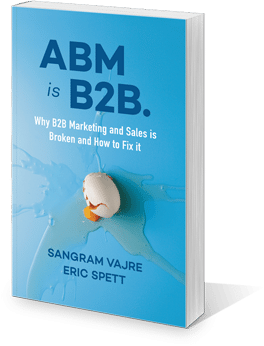
With 90% of startups estimated to fail, there’s a high probability that an early-stage startup won’t survive its first year.
Why do startups fail so often?
As it turns out, the answer lies in marketing. As much as 70% of startup failures can be attributed to ineffective marketing strategy or poor execution.
That’s why in order to form the right marketing strategy, it’s important that early-stage Startup companies shift their approach as to what marketing should achieve at this early stage.
Today there are dozens of good marketing strategies for startups out there. Some are geared for a minimal marketing budget others for making as much noise as possible.
The reality is, that even if these marketing strategies with all the fancy marketing tactics are executed to perfection, they will not achieve much until problem market fit has been proven.

To be clear, you can grow before you have figured out your problem market fit. Envisioning the sweet sound of media buzz and heralded demand for your product may feel like success.
And that’s why companies with large budgets pour money into PR, social media, content marketing, with SEO, blog posts and email campaigns. But that growth eventually proves unsustainable.
But the quickest way to risk your startup’s demise is by scaling too early before having proof of the market problem that you solve.
Every business needs to adjust their marketing strategy based on their maturity stage.
Startup founders will romanticize the days when having a marketing budget was only a fantasy. Back when lean operations relied solely on creative problem-solving in order to develop a Minimum Viable Product (MVP).
After MVP is proven, startups look for their first market validation via someone in their inner circle. Either trying the product themselves or connecting to someone who tries the product (usually as a favor).
Even after gaining a few of these ‘early adapters’, sooner or later the pressure comes to prove that the market agrees if the product actually solves something that they’re willing to pay for.
The only focus marketing should have at this stage is to decipher who that market is and why.
Sangram Vajre, co-founder of Terminus and author of “ABM is B2B,” defines the three stages of a business as follows:

These three stages are critical for businesses to go through in order to be successful in the long term. By understanding and focusing on each of these stages, a business can develop a strong foundation that will help it grow and scale over time.
A GTM strategy leaves no part of your product launch to guessing. Every step of the way is mapped out.
In a GTM strategy you will detail your target market, define how your product brings them value, map their customer journey, workout the messaging guidelines, the exact marketing channels you’ll use, how much budget to allocate and what the goals look like for each individually.
We talk about how to build a winning GTM strategy in 2023 here.
The company’s Go To Market (GTM) strategy changes as the company progresses from stage to stage. The GTM strategy is a comprehensive plan for bringing a product or service to market, and as a company grows and evolves, its GTM strategy must also evolve.
Navigating the vast array of marketing tactics and channels can be intimidating. To best leverage your marketing efforts, so that they achieve the objective of your company’s business stage you need to create a Go-To-Market (GTM) strategy.
Implementing your GTM strategy should streamline the processes you use to execute each actionable step. When you streamline your system, executing your strategies becomes straightforward and achievable.
For example, in the Problem Market Fit stage, the focus is on finding the right problem to solve, so the GTM strategy might involve market research, customer interviews, and other forms of customer discovery. In the Product Market Fit stage, the focus is on testing and refining the product, so the GTM strategy might involve customer feedback, beta testing, and other forms of product validation.
In the Platform Market Fit stage, the focus is on scaling and growing the business, so the GTM strategy might involve building a platform, forming partnerships, and expanding into new markets.
In each stage, the company’s GTM strategy must change to meet the new challenges and opportunities that come with growth. By having a flexible and adaptive GTM strategy, a company can maximize its chances of success as it progresses through each stage.